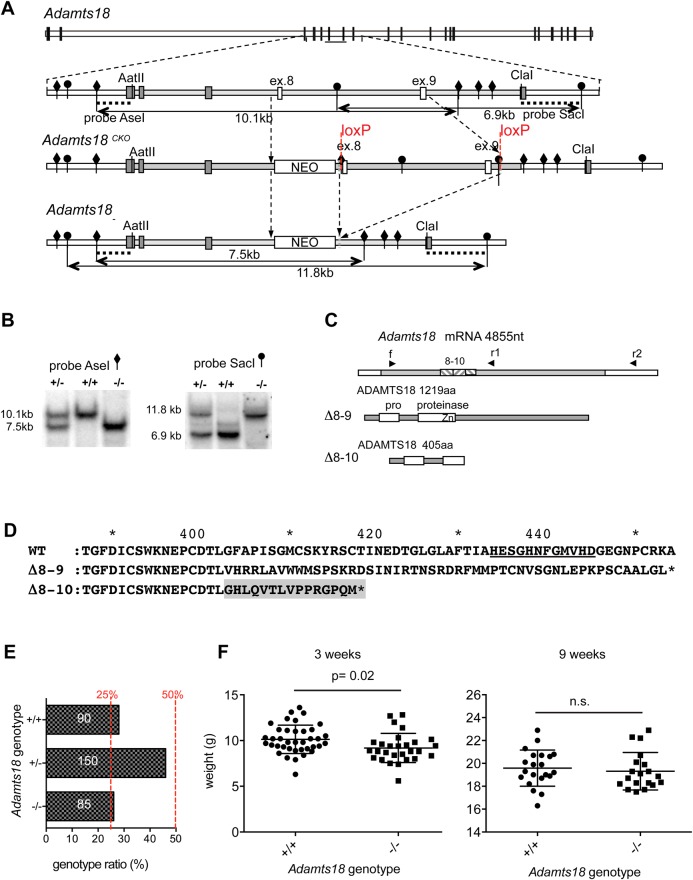Fig. 1.
Generation of Adamts18-deficient mice. (A) Initially, a conditional knock out allele Adamts18CKO predicted to encode WT ADAMTS18 protein was created. The ADAMTS18 region (gray) bordered by restriction sites Aat II and Cla I and containing exons 8 and 9 (blue) was replaced through homologous recombination by a modified sequence containing a neomycin resistance cassette (NEO) and two loxP sites flanking exons 8 and 9. The Adamts18KO allele was obtained by crossing male mice with the conditional Adamts18CKO allele to females of the MMTV-Cre line A (Wagner et al., 2001). Exons 8 and 9 (white), encoding for the Zn-binding site of the catalytic domain, were replaced by a neomycin cassette. In the blow-up, Ase I restriction sites are indicated by diamonds and Sac I restriction sites by lollipops. (B) The mutation changed the pattern of genomic DNA digestion with restriction endonucleases Ase I or Sac I revealed by Southern blotting of genomic DNA. (C) Schemes of predicted Adamts18 transcripts (coding sequence in gray). The transcript can be amplified from both WT and Adamts18−/− eyes using primer pairs f-r1 or f-r2 (see panel A). Sequencing of the mutant transcript revealed that in addition to the targeted exons 8 and 9 (striped) exon 10 (striped) is missing. (D) Translation of the expected Adamts18KO (D8-9) and the cloned (D8-10) sequences indicates a frame shift resulting in a protein truncated at amino acid 405. (E) Frequency of Adamts18 genotypes in offspring from 21 Adamts18+/− mating pairs was determined. Columns represent the percentage of the registered genotypes; dashed red lines indicate expected frequency based on Mendelian inheritance. Numbers in the columns represent absolute numbers of pups for each genotype; WT: n=90, Adamts18+/−: n=150, Adamts18−/−: n=85. The significance of deviation from the expected Mendelian ratio was tested using chi-squared statistics as non-significant, P=0.32. (F) Weight of Adamts18−/− females and their WT littermates at 3-weeks of age (n=38 and 28, respectively), P=0.018, two-tailed Student's t-test, and at 9-weeks of age (n=21 and 19), P=0.6, two-tailed Student's t-test.

